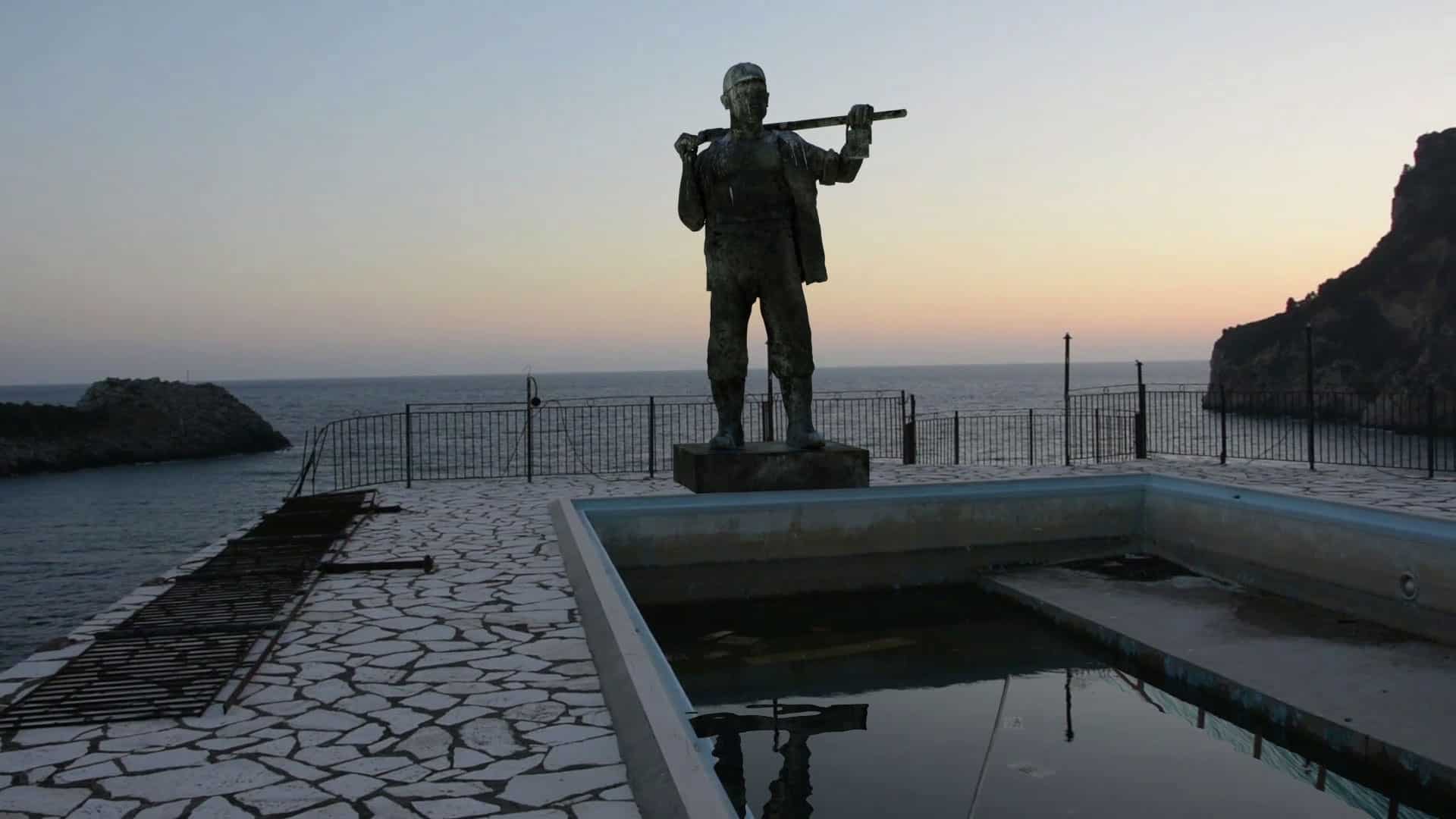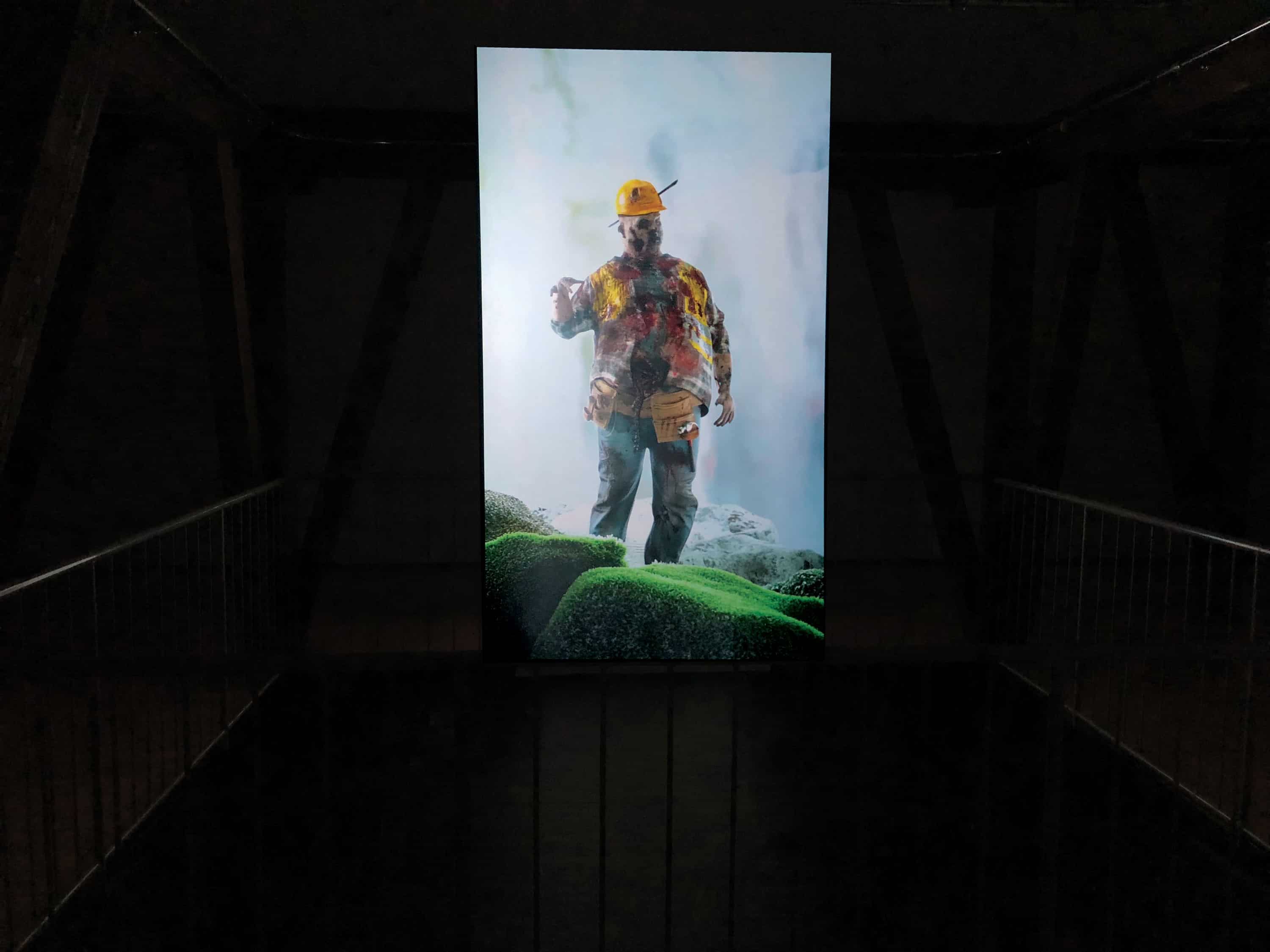Videoart installations by Róża Duda and Michał Soja have gained considerable acclaim in Poland and abroad even though the artists have graduated fairly recently from the Krakow Academy of Fine Arts. In early February, I met with both artists while they were preparing the Zauberberg exhibition in the Krakow House in Nuremberg. I intended to gather some intel on the reasons behind their collaborative practice, work methods, creative process, upcoming film projects, and finally, to ask how a dead body discovered in the Vistula river inspired them to make their first video.

Róża Duda and Michał Soja
Paulina Olszewska: Let’s start from the beginning. Why did you decide to join forces?
Róża Duda: Initially, we provided each other with more or less an advanced technical support while implementing independent projects. Soon, we realized we were completely in sync. Our projects’ development was fostered by an exchange of ideas and discussions. At some point, our occasional collaboration turned into “a full-time job” quite organically.
Michał Soja: Actually, I am a Miner’s Son screened in the Zauberberg exhibition in the Krakow House is the first large-scale art project we made together. We still have a lot to figure out as an artist duo. On the other hand, we’ve already accumulated lots of common valuable experience. Our other film project is currently in the pipeline, so as you can see that the collaboration did pan out somehow.
PO: Does this mean you also work separately?
MS: These projects have already exceeded our wildest expectations in terms of scope and form, so we simply don’t have time to engage in an independent art practice on top of all that. I tried to do my own thing in the meantime, but failed to finish it because I was incapable of reconciling the two lines of work.
RD: I find it hard to imagine us working individually. We channel our entire energy into these joint pursuits, as we complete one project, another one is looming on the horizon immediately. No wonder we’re short on time to devote to our own art practice, even as something we would do on the side. I’ve produced a couple of small artworks of my own accord, but I gain a greater sense of satisfaction from our joint projects that derive from a continuous creative process based on our discussions and meditations. I value them a lot, personally. Working with Michał is much more meaningful to me. As we grow as human beings, absorbing the things we read, think, dispute and surround ourselves with, our collaboration grows naturally with us.
PO: Could you elaborate on your creative process?
MS: I picture it as a corporate brainstorming session. The sparks are flying from all these different directions, there are neither rules nor roles assigned. I believe this process resonates through our work that often seems (over)saturated with a multiplicity of ideas as if both parties involved were incessantly bombarding the core concept with various contexts. Our works are packed densely with meanings perhaps due to the fact that we both contributed something of our own to their final manifestations.
RD: Sometimes, we’re at each other’s throats because either Michał or I happen to take credit for some idea. The lines of authorship get blurry since there’s no clear-cut distinction between our individual contributions to the piece. On the other hand, none of these work would’ve ever even existed if we created them separately, not for necessarily purely technical, but rather intellectual reasons. The artworks are complemented by essential scenographic components that frame their perfect arrangement. The design must sit well in a gallery space to provide viewers with a unique artistic experience. That’s precisely the case as far as the art show in the Krakow House is concerned.
PO: Whose idea was it then to make I Am a Miner’s Son, which will be presented in April 2019 in Nuremberg?
MS: Originally, it was Róża who came up with the concept after a murder investigation caught her attention. A dead body remained hidden in the waters of the Vistula river for over nine years, so we found ourselves intrigued by the preserving qualities of water.
RD: The objects we placed on the bottom of the river were preserved by the water itself that paradoxically was keeping them alive. The project developed in a completely unexpected direction as we pondered the image of a flooded mine.
I Am a Miner’s Son (2018) Trailer from Michał Soja on Vimeo.
PO: What sort of direction? Is your piece a combination of various fragments or did you devise a coherent narrative beforehand?
RD: We were reading books by Zygmunt Bauman and mulling over his concept of the liquid modernity that influenced not only the formation of the idea itself, but also its narrative structure. I discovered the hotel we used as one of the locations during my visit to Athens for the documenta festival. Multiple dimensions are brought together and steeped in the entropy and inertia. They stem from an aggressive accumulation…
MS: …of the capital and its side-effects, you mean. Our intention was also to represent the transitions spurred on by the technological progress, the formation of society’s collective memory and identity. The cave/mine epitomizes all these notions and hence bears connotations with Plato’s world populated by ideas, as well as the concepts of technology’s development and the state of limbo maintained through the medium of water. In addition, a variety of agents transforms the reality and adds new layers of meaning. This eerie phantasmagoric world is imbued with dreams and desires inextricably linked to one’s immersion in the information’s network, fake news and alternative versions of history. Current exacerbation of these phenomena can be witnessed in Poland, Europe and all around the world. Our film production coincided with Donald Trump being elected as the president of the United States. Widespread concern about an imminent change was clearly palpable around that time.
RD: Every single spectator is our film’s protagonist. On their journey through the ruins, they are confronted with the legacy of the bygone modernist, or perhaps post-modernist, era. The film’s title is also deliberately absurd.
PO: Where does your character come from?
RD: He comes from the social realist painting by the artist named Derren whom we stumbled upon in a book entitled Artificial Hells. His work was also incorporated into The Battle of Orgreave Archive (An Injury to One is an Injury to All), a piece by the British artist Jeremy Deller that refers to the battle of Orgreave – a violent clash between the police and picketing miners that occurred back in 1984. Deller’s installation comprising the documentation of the strike and “our” image was unveiled in Tate Britain in London (9 June – 13 September 2015).
MS: Its contents evoke the post-industrial reality. A miner’s son must face a set of completely different financial circumstances owing to the fact that nowadays he’s a citizen of the world, not a member of a class-divided society. He’s supposed to navigate this new complicated reality rife with projections, simulacra, delusions and manipulation of the news. In the society that he functions in, information is key.
PO: While I’m watching your film, I have the impression of experiencing multiple temporal dimensions simultaneously, meaning the past, present and future. The narrative itself carries strong post-apocalyptic undertones. Would you agree with this interpretation?
RD: That’s exactly what stuck in my mind during postproduction, this post-apocalyptic vision of the world. I imagined what this new realm would look like. Then, the meanings have expanded even further, but that’s just me. Michał’s own interpretation and mine might slightly differ.
MS: I disassociated myself from the post-apocalyptic overtones. In my opinion, what the film’s actually about is the cognitive frenzy of a derailed mind that yearns for a relentless progress, constant evolution. On its journey, this mind ventures into futuristic hallways and comes across some ludicrous objects until it ultimately reaches the promised land, this enclosed terrain virtually teeming with optimism. It’s the path traversed by consciousness.
PO: Last but not least, what are you working on next?
MS: Our upcoming project, based on a non-fiction book, revolves around the figure of Faustin Wirkus, a Polish immigrant from the US who, nota bene, was also a coal miner. In the 1920s, Wirkus joined the marines. His troops occupied Haiti, whereas Wirkus himself was crowned the king of the adjacent island called La Gonâve. His colonial story illustrates an ability to shed his extraneous identities to adopt other ones that seem to merge together: he was a Polish and American citizen, a soldier, and finally a revered member of the island’s community. Wirkus wrote his autobiography entitled The White King of La Gonâve. In our film, his character serves as pretext for a speculative narration unfolding in the form of a cinematic essay.
RD: We assume it will still take us approximately a year to finish the project. The premiere will be held no sooner than 2020.
PO: Well then, fingers crossed and I look forward to seeing the final cut. Thank you for the conversation.
Edited by Lisa Barham
Exhibition “Zaubergerg” by Róża Duda and Michał Soja
12.04 – 14.04.2019
Krakauer Haus, Nürnberg
Hintere Insel Schütt 34 , 90403 Nürnberg








